Your Essential White Wine Sweetness Chart
Welcome, wine enthusiasts and aficionados, to your go-to guide on understanding the nuances of white wine sweetness. In this comprehensive post, we'll delve into the intricacies of sweetness levels in white wines, demystifying terms like "dry" and "sweet" while providing a handy white wine sweetness chart. Whether you're a seasoned connoisseur or just beginning your journey into the world of wine, Pacific Rim & Co. is here to elevate your knowledge and appreciation of this beloved beverage.
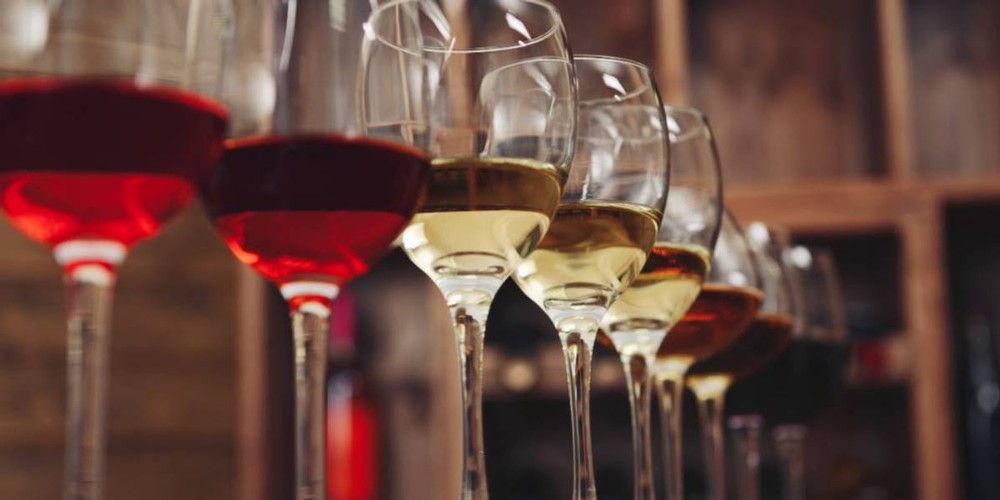
What Does Dry Wine Mean?
Before we dive into the sweetness chart, let's clarify the answer to the question; what does dry wine mean? Dry wine refers to a wine that contains minimal residual sugar, resulting in a crisp, refreshing taste. When you sip a dry white wine, such as a Sauvignon Blanc or Chardonnay, you'll notice a lack of sweetness on your palate. Instead, these wines often boast vibrant acidity and complex flavor profiles, making them versatile companions to a wide array of dishes.
Dry wines are prized for their versatility and ability to pair seamlessly with various cuisines. The absence of residual sugar allows the natural flavors of the grapes and terroir to shine through, creating a sensory experience that is both refreshing and nuanced. Additionally, the acidity present in dry white wines provides structure and balance, making them ideal for cutting through rich or fatty foods. According to a study published in the Journal of Food Science, dry wines have been associated with health benefits such as improved heart health and reduced risk of diabetes when consumed in moderation. Whether you're enjoying a crisp Chablis with fresh oysters or a zesty Sauvignon Blanc with a tangy goat cheese salad, dry white wines are sure to enhance your dining experience.
Furthermore, the term "dry" can vary depending on personal taste preferences and cultural context. While some wine drinkers may prefer bone-dry wines with no perceptible sweetness, others may enjoy wines with a touch of residual sugar, known as off-dry or semi-dry. Understanding the spectrum of dryness in white wines allows you to make informed choices when selecting bottles for different occasions or pairings. With Pacific Rim & Co.'s commitment to sustainability and quality, you can trust that each bottle of dry white wine reflects our dedication to craftsmanship and excellence.
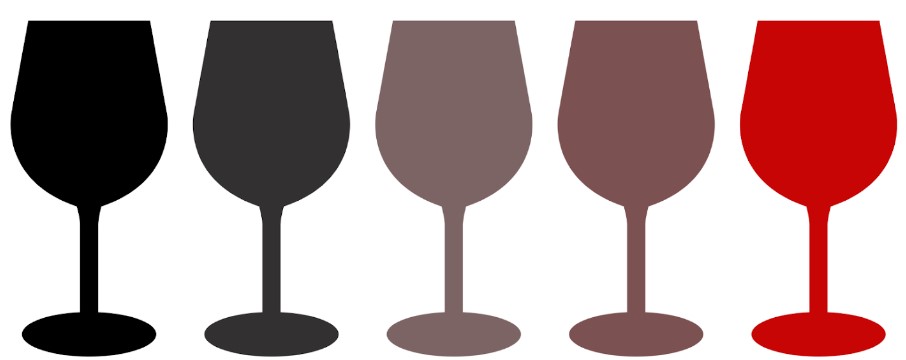
Decoding the Sweetness Levels: A White Wine Sweetness Chart
Understanding the sweetness levels of white wine is essential for selecting the perfect bottle to suit your taste preferences. To assist you in this endeavor, we've created a white wine sweetness chart that categorizes wines based on their sugar content, ranging from bone-dry to lusciously sweet. Let's explore each category:
Bone-Dry:
- Wines in this category have minimal residual sugar, offering a crisp and refreshing taste. They typically have less than 1 gram of residual sugar per liter.
- Examples include Pinot Grigio, Albariño, and some styles of Chablis.
Dry:
- Dry white wines have a subtle hint of sweetness balanced by acidity, providing a clean and balanced flavor profile. They typically have 1-10 grams of residual sugar per liter.
- Examples include Sauvignon Blanc, unoaked Chardonnay, and Grüner Veltliner.
Off-Dry:
- Off-dry white wines possess a touch of sweetness, making them approachable and versatile. They typically have 10-35 grams of residual sugar per liter.
- Examples include Riesling Kabinett, Chenin Blanc, and Moscato d'Asti.
Medium-Sweet:
- Medium-sweet white wines offer a noticeable sweetness on the palate, balanced by acidity for a harmonious taste. They typically have 35-75 grams of residual sugar per liter.
- Examples include Gewürztraminer, late-harvest Riesling, and some styles of Viognier.
Sweet:
- Sweet white wines are lusciously sweet, with pronounced residual sugar and rich, decadent flavors. They typically have over 75 grams of residual sugar per liter.
- Examples include Sauternes, Ice Wine, and Tokaji.
Navigating the White Wine Sweetness Chart
Now that you're acquainted with the various sweetness levels, you can confidently navigate the aisles of your local wine shop or peruse our selection of Pacific Rim & Co. wines online. Our commitment to sustainability and quality shines through in each bottle, showcasing the unique essence of the Pacific Northwest region.
When exploring the white wine sweetness chart, it's essential to consider personal taste preferences and food pairings. For those who enjoy crisp, bone-dry wines, options like Pinot Grigio or Albariño are excellent choices for refreshing summer sipping or pairing with light seafood dishes. On the other hand, if you prefer a hint of sweetness in your wine, off-dry or medium-sweet varietals like Riesling or Gewürztraminer offer a delightful balance of fruitiness and acidity. These wines pair beautifully with spicy Asian cuisine or creamy cheeses, enhancing the overall dining experience.
Understanding what makes wine sweet involves various factors, including grape ripeness, winemaking techniques, and residual sugar content. During the winemaking process, grapes undergo fermentation, where yeast converts grape sugars into alcohol. The level of sweetness in the final wine depends on how much sugar remains unfermented. Factors such as grape variety, climate, and harvest timing play crucial roles in determining sugar levels in the grapes. For instance, grapes harvested later in the season tend to have higher sugar levels, resulting in sweeter wines. Additionally, winemaking techniques such as late harvesting, sun-drying, or fortification can also influence wine sweetness. At Pacific Rim & Co., our winemakers meticulously monitor these factors to craft wines that strike the perfect balance between sweetness and acidity, ensuring a delightful sensory experience with every sip.
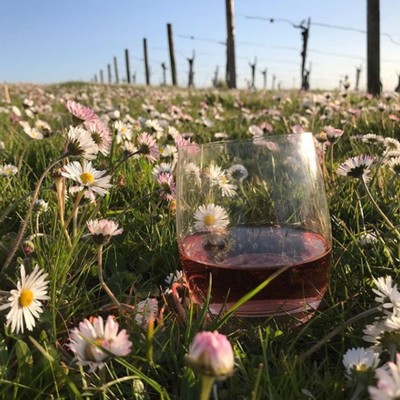
Exploring the Science Behind Wine Sweetness
Have you ever wondered what factors contribute to the varying levels of sweetness in white wines? It's a complex interplay of several scientific processes that occur during grape growth and winemaking.
1. Grape Ripeness
One of the primary determinants of wine sweetness is the ripeness of the grapes at harvest. As grapes ripen on the vine, their sugar levels increase. This is because sunlight triggers photosynthesis in the grapevine, converting sugars stored in the leaves into glucose and fructose in the grapes. Winemakers carefully monitor the ripeness of the grapes, known as "brix," to determine the optimal time for harvest. Grapes harvested earlier in the season tend to have lower sugar levels and produce drier wines, while grapes left to fully ripen on the vine result in sweeter wines.
2. Residual Sugar Content
During the winemaking process, grapes are crushed, and the juice is extracted for fermentation. Fermentation is the conversion of sugar into alcohol and carbon dioxide by yeast. However, not all sugars are completely fermented. Some remain unfermented, contributing to the residual sugar content of the wine. Winemakers can control the sweetness of the final wine by halting fermentation before all the sugar is converted into alcohol. This is often done by chilling the wine or adding sulfur dioxide to inhibit yeast activity. The amount of residual sugar left in the wine determines its sweetness level, ranging from bone-dry to lusciously sweet.
3. Winemaking Techniques
Winemakers have various techniques at their disposal to influence wine sweetness. Late-harvesting involves leaving grapes on the vine longer than usual to allow them to accumulate more sugar. This results in sweeter wines with higher residual sugar levels. Another technique is sun-drying, where grapes are laid out in the sun to partially dehydrate, concentrating their sugars. This process is commonly used in the production of sweet dessert wines like Vin Santo or Amarone. Additionally, some winemakers opt for fortification, where grape spirits such as brandy are added to the wine to stop fermentation and retain residual sugar, as seen in fortified wines like Port or Sherry.
Understanding these scientific processes sheds light on the complexity of wine sweetness and highlights the artistry and skill involved in winemaking. At Pacific Rim & Co., our winemakers harness these techniques to craft wines that embody the perfect balance of sweetness, acidity, and flavor, resulting in exceptional wines that delight the senses.
The Role of Terroir in Wine Sweetness
In addition to scientific factors, the concept of terroir also plays a significant role in wine sweetness. Terroir encompasses the environmental factors that influence grape growing, including soil composition, climate, topography, and vineyard management practices. These unique terroir characteristics impart distinct flavors and aromas to the grapes, which ultimately influence the sweetness of the wine.
1. Climate
Climate has a profound impact on grape ripening and sugar accumulation. In cooler climates, grapes may struggle to reach optimal ripeness, resulting in lower sugar levels and drier wines. Conversely, warmer climates promote sugar accumulation, yielding riper grapes and sweeter wines. For example, regions like California's Napa Valley or Australia's Barossa Valley are known for their sun-drenched vineyards, producing rich, ripe wines with pronounced sweetness.
2. Soil Composition
The composition of the soil in which grapevines are planted can also influence wine sweetness. Different soil types, such as limestone, granite, or volcanic ash, impart unique mineral flavors to the grapes, which can enhance or balance the sweetness of the wine. For instance, wines grown in limestone-rich soils may exhibit vibrant acidity, balancing out the sweetness of the fruit flavors.
3. Vineyard Management
Vineyard management practices, such as irrigation, canopy management, and vine spacing, can impact grape ripening and sugar accumulation. Sustainable vineyard practices, such as organic or biodynamic farming, aim to promote soil health and biodiversity, creating optimal conditions for grape growth and flavor development. By nurturing the vineyard ecosystem, winemakers can produce grapes with balanced sugar levels and expressive flavors, resulting in wines that reflect the unique terroir of the region.
By considering the scientific processes and terroir influences behind wine sweetness, wine enthusiasts can gain a deeper appreciation for the complexities of winemaking and the unique characteristics of each bottle. At Pacific Rim & Co., we celebrate the diversity of terroir in the Pacific Northwest, crafting wines that showcase the region's distinct flavors and reflect our commitment to sustainability and quality.
Embark on a Sweet Journey with Pacific Rim & Co.
As you embark on your journey through the world of white wine sweetness, let Pacific Rim & Co. be your trusted companion. With our dedication to sustainability, regionally-specific wines, and exceptional quality, we invite you to explore our selection of white wines and indulge in the rich flavors and aromas of the Pacific Northwest.
Ready to elevate your wine experience? Click here to browse our collection of white wines and embark on a sweet adventure like no other. Cheers to good wine and great company!
Contact us for more information or to join our wine club for exclusive offers and updates.
Best Red Wine: A Connoisseur's Guide
When it comes to selecting the best red wine, the journey can be as rich and complex as the wines themselves. For enthusiasts, newcomers, and the health and budget-conscious alike, the quest to find the perfect bottle is a nuanced exploration of taste, tradition, and terroir. This guide is dedicated to unraveling the mystery of what constitutes the best red wine, catering to those who cherish regionally-specific, sustainable, and high-quality vintages.
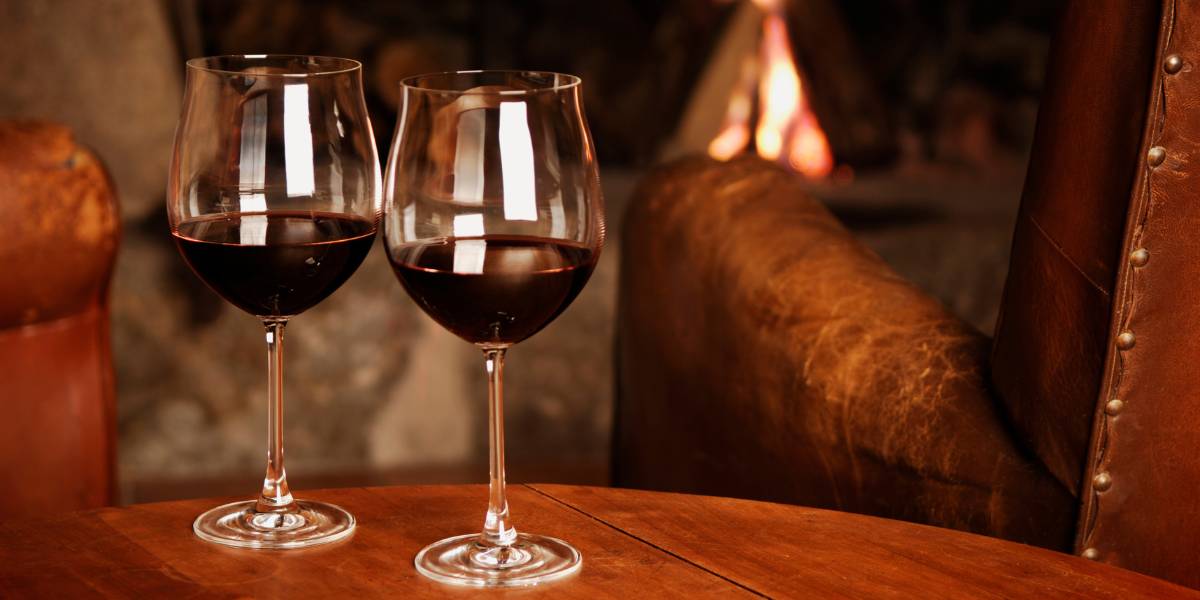
What Is the Best Red Wine for Younger Consumers?
In the vibrant world of red wines, younger consumers often look for bottles that not only tantalize their taste buds but also resonate with their values. Sustainable and affordable wines from small brands like Pacific Rim & Co. stand out. Their commitment to eco-friendly winemaking and the embodiment of the Pacific Northwest's unique characteristics make their offerings particularly appealing. The best red wine for this audience is one that tells a story of passion, place, and preservation.
The Significance of Regionally-Specific Wines
Regionally-specific wines offer a glimpse into the heart of the areas they come from. These wines, imbued with the essence of their native soil, climate, and winemaking traditions, provide a taste experience that's hard to replicate. For those wondering what the best red wine is, exploring these regional treasures can be a rewarding journey. Pacific Rim & Co., with its focus on capturing the spirit of the Pacific Northwest, showcases how regional identity can elevate a wine to new heights.
Sustainability in Winemaking
Sustainability is no longer just a buzzword in the wine industry; it's a movement. Eco-friendly winemaking practices not only benefit the planet but also result in cleaner, more authentic wines. Brands that prioritize sustainability, like Pacific Rim & Co., are leading the way in showing how environmental stewardship can go hand in hand with producing high-quality wines. The best red wine, in this context, is one that contributes to the health of the earth and its inhabitants.
Affordability Without Compromise
Discovering the best red wine doesn't have to break the bank. Today, numerous exceptional wines are both affordable and of high quality. Pacific Rim & Co. exemplifies this balance, offering top-tier, sustainable wines at prices that make them accessible to a wider audience. This approach ensures that wine enthusiasts can enjoy premium wines without compromising on their values or their wallets.
The Health-Conscious Wine Lover
For health-conscious individuals, red wine holds particular allure due to its antioxidants and potential heart health benefits. The best red wine for this audience is one that's produced with minimal intervention, preserving its natural qualities and health benefits. Pacific Rim & Co.'s wines, with their focus on natural winemaking processes, cater to those who prioritize their well-being alongside their wine enjoyment.
What Is the Best Red Wine? A Deep Dive into Varietals
When considering what the best red wine is, it's essential to explore the varietals that have captured the hearts of connoisseurs and casual drinkers alike. From the robust and complex Cabernet Sauvignon to the smooth and fruity Pinot Noir, the world of red wines is diverse. Each varietal offers a unique experience, reflecting the intricacies of its origin and winemaking process. Pacific Rim & Co.'s selection includes varietals that are a testament to the richness of the Pacific Northwest's wine heritage.
Pairing Food with the Best Red Wine
The right food pairing can elevate the wine-drinking experience, unlocking new flavors and enhancing overall enjoyment. The best red wine is one that complements your meal, whether it's a hearty Cabernet Sauvignon paired with red meat or a lighter Pinot Noir alongside a delicate fish dish. Pacific Rim & Co.'s offerings provide a versatile palette that can match a wide range of culinary delights.
Values, Quality, and the Pacific Rim & Co. Experience
In the quest to discover the best red wine, it's clear that the journey is as individual as the drinker. Whether you're drawn to the sustainability and regional specificity of Pacific Rim & Co.'s wines or the health and budget-friendly aspects of their offerings, there's a world of red wines waiting to be explored. As we've seen, the best red wine is more than just a beverage; it's a reflection of values, tradition, and the tireless pursuit of quality.
For those looking to dive deeper into the world of high-quality, sustainable, and regionally-specific wines, Pacific Rim & Co. invites you to explore their selection. Whether you're a seasoned connoisseur or a curious newcomer, their wines are crafted to inspire, delight, and bring people together. Contact us for more information and embark on your journey to discover your next favorite wine.
Dry White Wine: A Classic Choice
In the world of wine, dry white wine holds a place of reverence among enthusiasts and connoisseurs alike. Its crispness, versatility, and subtle complexity make it a preferred choice for many, particularly those who appreciate the nuances of a well-crafted beverage. This blog post dives into the delightful world of dry white wine, with a special focus on a common query: Is Sauvignon Blanc sweet? By exploring this, we cater to wine lovers of all ages, especially the younger generation and those who prioritize sustainability, health, and value, much like the ethos of Pacific Rim & Co.
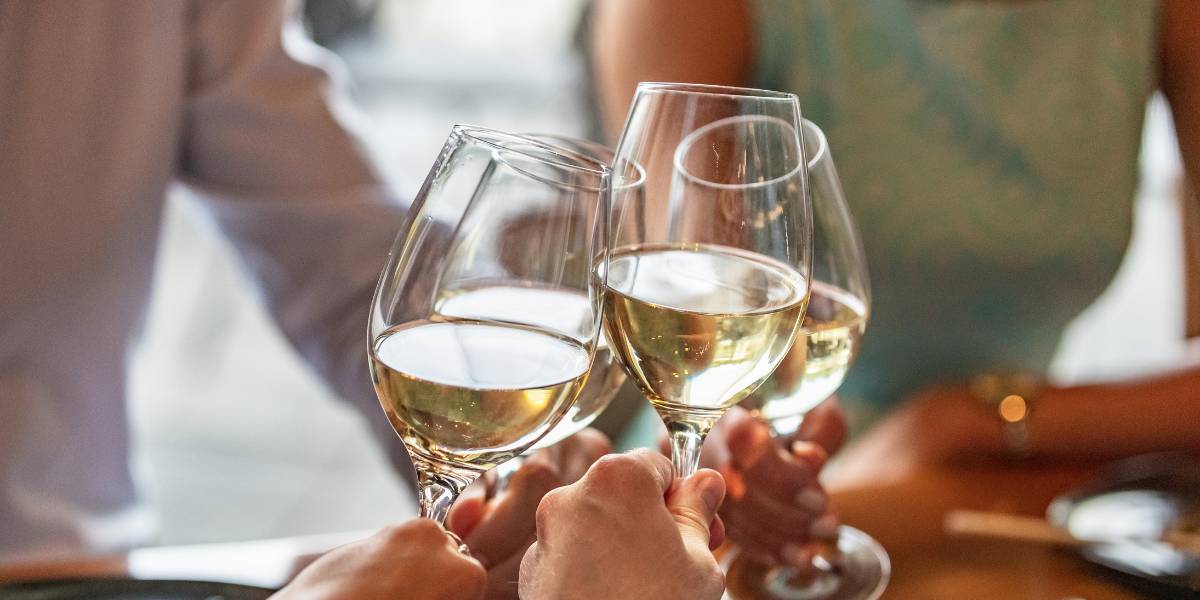
What is Dry White Wine?
Dry white wine, a staple in many gatherings, dinners, and wine collections, is known for its lack of sweetness. But what defines a wine as 'dry'? It's the sugar content—or, more accurately, the lack of it. After fermentation, wines that have little to no residual sugar are categorized as dry. Among these, Sauvignon Blanc stands out for its crisp acidity, range of flavors, and, importantly, its dryness, making it a quintessential choice for both novices and aficionados.
Is Sauvignon Blanc Sweet?
This question often arises among enthusiasts exploring the vast world of wines. To answer simply, Sauvignon Blanc is generally not sweet; it is revered for its dry profile. This characteristic allows its vibrant acidity and spectrum of flavors—from herbaceous notes in New Zealand varieties to citrusy and mineral nuances in those from the Pacific Northwest—to shine through, offering a refreshing sip every time.
Understanding the Appeal of Dry White Wine
The appeal of dry white wine, such as Sauvignon Blanc, lies in its ability to complement a wide range of dishes, from seafood to goat cheese salads, enhancing the dining experience. Moreover, its refreshing nature makes it an excellent choice for warm-weather gatherings, acting as a palate cleanser and conversation starter.
For Pacific Rim & Co., the connection between the wine and the land is paramount. The company's commitment to producing high-quality, sustainable wines is reflected in its selection of dry white wines, including its celebrated Pacific Rim Riesling. These wines not only capture the essence of the Pacific Northwest region but also embody the brand's dedication to environmental stewardship.
The Significance of Region and Sustainability
The region where grapes are grown plays a crucial role in the characteristics of the wine produced. The terroir—the environment including the soil, topography, and climate—imparts unique qualities to the grapes, influencing the wine's flavor profile, acidity, and, ultimately, its dryness or sweetness. Pacific Rim & Co. takes pride in its Pacific Northwest vineyards, where the unique terroir contributes to the distinctive flavors of its wines.
Sustainability is another critical aspect, especially for the health and budget-conscious consumer who values small brands delivering exceptional value. Pacific Rim & Co.'s sustainable winemaking practices ensure that not only are the wines produced of high quality and environmentally friendly, but they also resonate with consumers who prioritize these values.
Catering to a Diverse Audience
Dry white wine, with its array of styles and flavor profiles, appeals to a broad audience. Younger consumers, in particular, are drawn to brands like Pacific Rim & Co. that offer transparency, quality, and a commitment to sustainability. These wines are not just beverages; they are stories in a bottle, tales of the land, and the meticulous care that goes into each vine and grape.
Why Choose Dry White Wine?
Choosing a dry white wine, such as a Sauvignon Blanc, is about embracing the blend of tradition and innovation, quality and sustainability. It's about supporting brands that not only produce delightful wines but also care for the planet. For those intrigued by the crisp, refreshing taste of a high-quality dry white wine, exploring Pacific Rim & Co.'s selection is an excellent start. Their commitment to the environment, coupled with their passion for creating wines that truly represent the Pacific Northwest, makes their offerings stand out in the wine world.
Are you ready to experience the crisp, refreshing taste of dry white wine? Pacific Rim & Co. invites you to explore our selection of sustainable, high-quality wines that celebrate the essence of the Pacific Northwest. Discover your new favorite wine today. Contact us for more information or click here to browse our collection.
Riesling White Wine: Bright and Divine
Welcome to the world of Riesling white wine – a vibrant, versatile, and utterly divine creation that captures the essence of the Pacific Northwest region. At Pacific Rim & Co., we take immense pride in crafting sustainable and affordable wines that embody the spirit of our terroir. Join us as we explore the nuances of Riesling white wine, from its origins and flavor profile to discovering the sweetest Riesling varietals that tantalize the taste buds of wine enthusiasts and budget-conscious consumers alike.
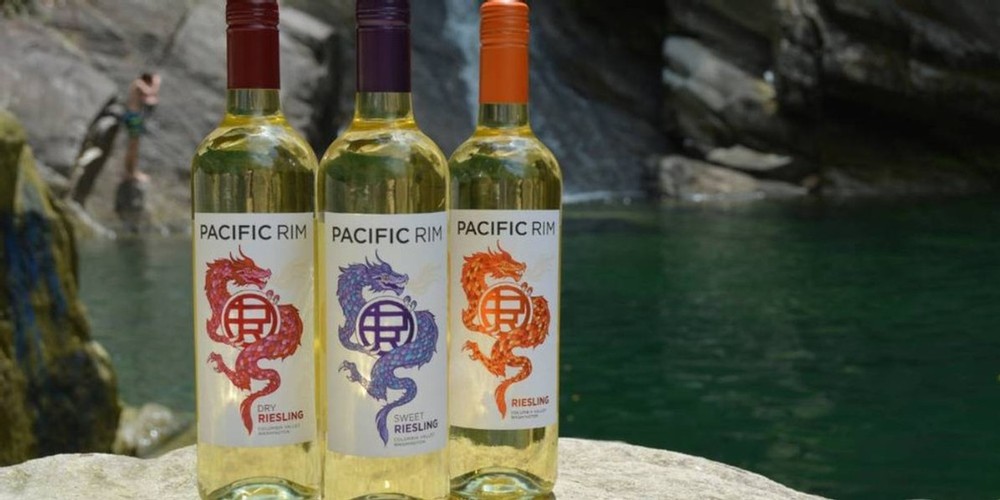
Exploring the World of Riesling White Wine
Riesling white wine boasts a rich history that dates back centuries, originating in the Rhine region of Germany. This aromatic grape variety has since traveled the world, finding a new home in the Pacific Northwest's lush vineyards. According to Wine Enthusiast, Riesling is one of the most versatile grape varieties, capable of producing wines ranging from bone-dry to intensely sweet. Its adaptability to various climates and soil types contributes to its widespread cultivation across the globe, with notable regions including Germany, France, Australia, and the United States.
In the Pacific Northwest, Riesling thrives in the cool climate conditions, with ample sunshine during the day and cool breezes from the Pacific Ocean at night. This unique terroir imparts distinct characteristics to the grapes, resulting in wines of exceptional quality and complexity. According to Wine Spectator, Washington State has emerged as a prominent Riesling-producing region, renowned for its crisp acidity, vibrant fruit flavors, and age-worthy expressions. The Columbia Valley AVA, encompassing over 11 million acres, serves as the epicenter of Riesling production in Washington, with diverse microclimates and soil types contributing to the grape's diversity and expression.
Furthermore, Riesling's ability to reflect terroir is unparalleled. As stated by Decanter, the grape's transparency allows it to convey the unique characteristics of each vineyard site, from the mineral-rich soils of the Mosel Valley to the volcanic slopes of the Pacific Northwest. This sense of place is evident in every bottle of Pacific Rim Riesling, where the essence of our region is captured in every sip.
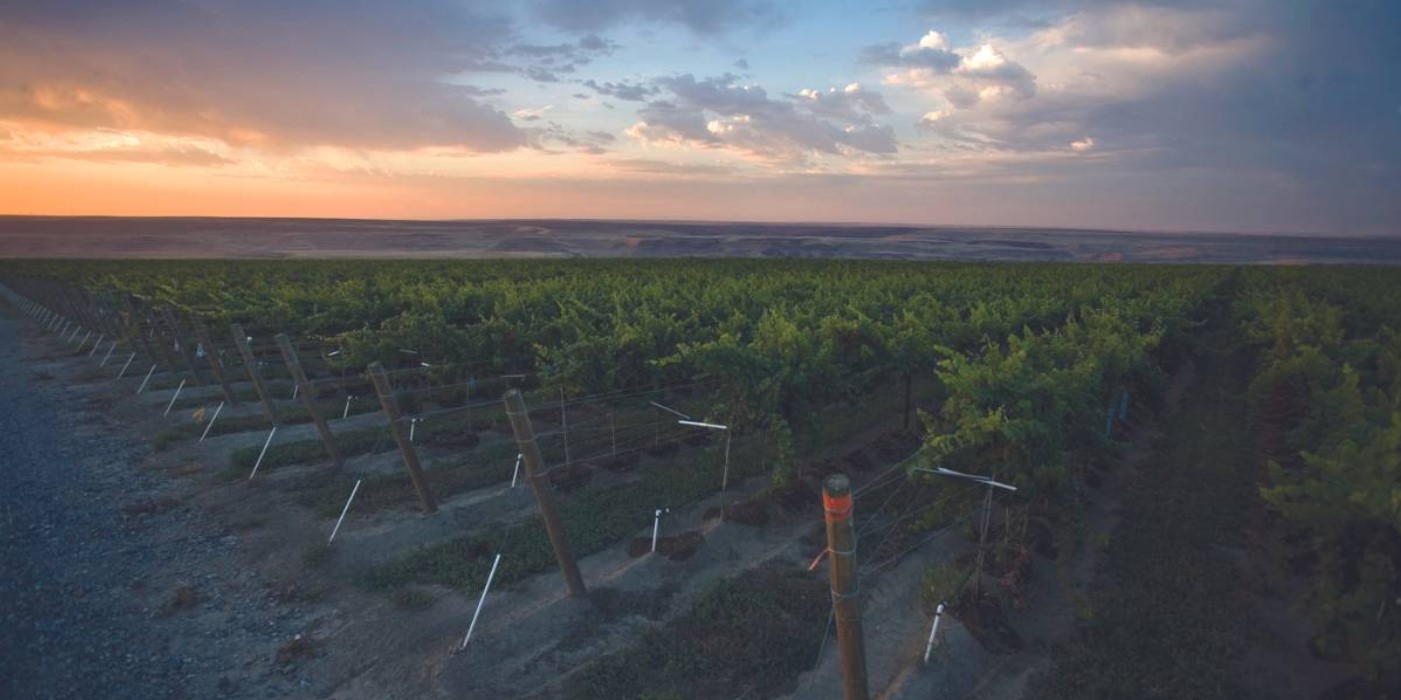
What is the Sweetest Riesling White Wine?
What is the sweetest Riesling white wine? This question often piques the curiosity of wine enthusiasts seeking a decadent indulgence for their palate. According to Wine Folly, Riesling wines are classified into sweetness levels ranging from bone-dry (Trocken) to intensely sweet (Trockenbeerenauslese). Late Harvest Riesling, a style characterized by grapes left on the vine longer to develop higher sugar levels, is renowned for its luscious sweetness and concentrated flavors. Pacific Rim Riesling Late Harvest, with its late-harvested grapes and botrytis-affected clusters, offers a perfect balance of sweetness and acidity, resulting in a wine of unparalleled richness and complexity.
In addition to Late Harvest Riesling, Ice Wine stands out as one of the sweetest expressions of Riesling white wine. According to Wine Enthusiast, Ice Wine is made from grapes that have naturally frozen on the vine, concentrating sugars and flavors to create a dessert-style wine of exceptional sweetness and intensity. Pacific Rim Ice Wine, crafted from select Riesling grapes harvested at optimal ripeness and frozen naturally in the vineyard, showcases the epitome of sweetness and purity, with flavors of ripe apricot, honey, and exotic fruits dancing on the palate.
Flavor Profile and Food Pairings
The allure of Riesling white wine lies in its vibrant acidity, aromatic bouquet, and complex flavor profile. On the palate, expect to encounter a medley of citrus fruits, stone fruits, and tropical notes, accentuated by hints of minerality and floral undertones. Whether enjoyed on its own or paired with food, Riesling complements a variety of dishes, ranging from spicy Asian cuisine to creamy cheeses and decadent desserts. Its refreshing acidity cleanses the palate, making it an ideal companion for a wide range of culinary delights.
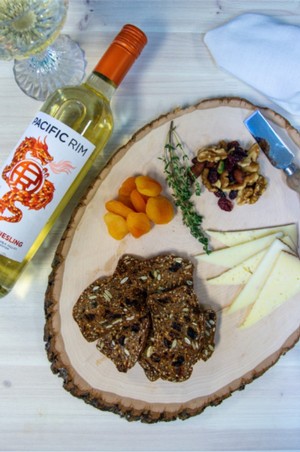
Furthermore, the versatility of Riesling extends to its ability to age gracefully. Contrary to popular belief, many Riesling wines can develop complexity and depth over time. According to Wine Spectator, high-quality Rieslings from top producers can age for decades, evolving into wines of sublime beauty with notes of petrol, honey, and dried fruits. This aging potential adds another dimension to the enjoyment of Riesling, offering wine enthusiasts the opportunity to experience its evolution and maturation firsthand.
Sustainability and Terroir
At Pacific Rim & Co., sustainability is at the heart of everything we do. Our commitment to environmentally friendly winemaking practices ensures that each bottle of Riesling white wine reflects the unique terroir of the Pacific Northwest region. From organic farming methods to minimal intervention in the cellar, we strive to minimize our carbon footprint while preserving the natural beauty of our vineyards for generations to come. By choosing Pacific Rim Riesling, you not only savor the taste of exceptional wine but also support our mission of sustainability and eco-consciousness.
Moreover, sustainable winemaking goes hand in hand with quality. According to Wine Spectator, environmentally friendly practices such as cover cropping, composting, and water conservation not only benefit the planet but also contribute to the overall health and vitality of the vineyard ecosystem. By nurturing the soil and fostering biodiversity, we ensure that our vines thrive and produce grapes of the highest quality, resulting in wines of exceptional purity and expression. With Pacific Rim Riesling, you can indulge in every sip knowing that it's not only delicious but also sustainably produced.
Embracing the Essence of the Pacific Northwest
The Pacific Northwest region, with its breathtaking landscapes and temperate climate, serves as an idyllic backdrop for Riesling white wine production. Here, our vineyards bask in ample sunlight during the day and cool breezes from the Pacific Ocean at night, resulting in grapes of unparalleled quality and depth of flavor. Each sip of Pacific Rim Riesling transports you to the pristine beauty of our terroir, evoking a sense of place and time that is truly magical.
Furthermore, the Pacific Northwest's commitment to sustainability and environmental stewardship aligns seamlessly with our values at Pacific Rim & Co. From renewable energy initiatives to habitat restoration projects, the region is a beacon of eco-consciousness and sustainability. By supporting Pacific Rim Riesling, you not only experience the essence of the Pacific Northwest in every glass but also contribute to the preservation of this pristine ecosystem for future generations to enjoy. Join us in raising a glass to the bright and divine world of Riesling white wine, where sustainability meets sublime flavor.
Indulge in the Sweetest Riesling: Explore Pacific Rim's Flavorful and Sustainable Offerings!
In conclusion, Riesling white wine stands as a shining example of the Pacific Northwest's winemaking prowess – vibrant, diverse, and utterly divine. Whether you're a seasoned wine enthusiast or a curious newcomer, we invite you to experience the magic of Pacific Rim Riesling and embark on a journey of flavor and discovery. Indulge in the sweetest Riesling varietals, embrace the essence of our region, and toast to sustainability with every sip. To explore our range of wines and learn more about our commitment to eco-friendly winemaking, visit our service page here. Cheers to the bright and divine world of Riesling white wine!
Ready to embark on a journey of flavor and sustainability with Pacific Rim & Co.? Visit our site to explore our range of Riesling white wines and discover the essence of the Pacific Northwest in every bottle. Contact us for more information and join us in raising a glass to the bright and divine world of Riesling. Cheers!
Perfect Wine Pairing with Salmon
Discovering the perfect wine pairing with salmon is an art form that delights the senses and elevates the dining experience. For enthusiasts and connoisseurs alike, understanding how to complement the rich, buttery texture of salmon with the right wine is key to unlocking a harmonious blend of flavors. In this blog, we delve into the world of salmon wine pairing, offering insights and tips for both seasoned aficionados and those new to the wine scene. Whether you're planning a sophisticated dinner party or simply looking to enhance your next salmon meal, join us on this flavorful journey.
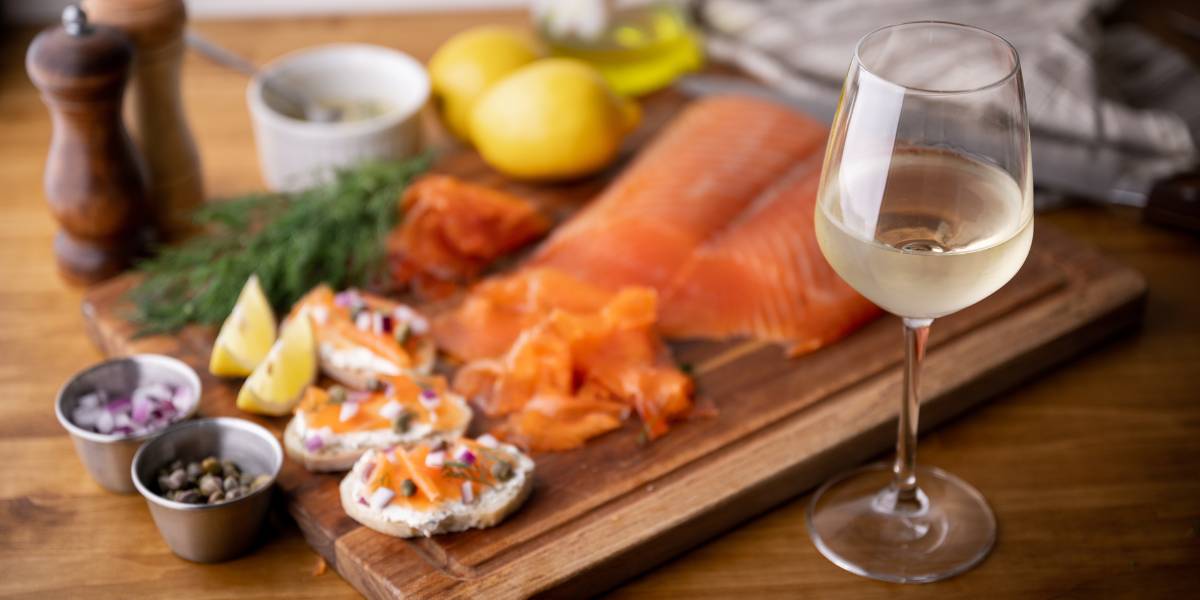
The Art of Wine Pairing with Salmon
Salmon, with its versatile flavors and textures, pairs beautifully with a wide range of wines. However, not all pairings are created equal. The secret lies in balancing the richness of the salmon with the acidity, body, and aroma of the wine. This is where the expertise of Pacific Rim & Co., a leader in sustainable and high-quality wine production, shines. Their commitment to crafting wines that not only taste exquisite but also respect the environment makes them a favorite among health and budget-conscious wine lovers.
Understanding the Basics
When it comes to creating the perfect culinary symphony, the art of wine pairing with salmon plays a crucial role. The magic lies in matching the wine's characteristics with the salmon's cooking method and seasoning. This approach ensures that both the wine and salmon can shine, enhancing the overall dining experience without overpowering each other. Let's delve deeper into how the cooking method and seasoning of salmon influence the choice of wine.
Grilled or Roasted Salmon Pairings
Grilled or roasted salmon is a delight, offering a smoky, charred exterior while retaining a tender, moist interior. This cooking method brings out a richer flavor in the salmon, which calls for wines that can stand up to this intensity. Fuller-bodied white wines are ideal as they have the structure and acidity to cut through the richness of the salmon, providing a refreshing counterbalance to each bite. Chardonnay, especially those aged in oak, can be a fantastic choice, offering buttery and vanilla notes that complement the smokiness of grilled salmon beautifully.
For those who have a penchant for red wines, light reds serve as an excellent pairing for grilled or roasted salmon. Pinot Noir, with its low tannins and subtle fruit flavors, harmonizes with the salmon's richness without overwhelming its natural flavors. The wine's earthiness and hints of berries can accentuate the smoky notes of the salmon, creating a memorable dining experience.
Poached or Steamed Salmon Pairings
Poached or steamed salmon showcases a completely different spectrum of flavors. This gentle cooking method preserves the salmon's delicate taste and soft texture, making it crucial to choose a wine that mirrors this subtlety. Crisp, light-bodied white wines are the quintessential match for poached or steamed salmon. Their high acidity and fresh, fruity notes can elevate the salmon's mild flavors without masking them.
Sauvignon Blanc is an exemplary choice for poached or steamed salmon. Its zesty acidity and citrusy profile bring out the salmon's flavors, enhancing the dish's lightness and freshness. Similarly, Pinot Grigio, with its crisp acidity and clean taste, offers a harmonious pairing that complements the delicate nature of poached or steamed salmon. These wines, with their ability to cleanse the palate, ensure that each bite of salmon feels as refreshing as the first.
The Role of Seasoning
Seasoning plays a pivotal role in wine pairing with salmon. Spices and herbs can alter the flavor profile of the salmon, necessitating a reconsideration of the wine choice. For salmon seasoned with bold spices or served with a rich sauce, opt for wines with more character and body to match the intensity of the flavors. Conversely, salmon with light, herbal seasoning pairs well with wines that have a floral or citrusy profile, accentuating the herbs' freshness.
The Perfect Match: Pacific Rim Riesling and Salmon
One of the most harmonious salmon wine pairings is with Pacific Rim's Riesling. This wine, emblematic of the Pacific Northwest's terroir, offers a balance of sweetness and acidity that perfectly complements the natural oils and flavors of salmon. Whether your salmon is grilled, baked, or smoked, the floral notes and crisp finish of a Riesling can elevate the dish to new heights.
Exploring Other Wine Options
While Riesling stands out as a stellar choice, other wines pair beautifully with salmon. For those who prefer red wine, Pinot Noir with its light body and subtle tannins can complement the fatty richness of salmon without overwhelming its flavor. Alternatively, a Chardonnay, with its creamy texture and hints of oak, can mirror the buttery aspect of the fish, creating a seamless pairing.
Salmon Wine Pairing: A Journey of Flavors
Embarking on the journey of salmon wine pairing opens up a world of flavors and experiences. From the crisp, refreshing taste of Sauvignon Blanc to the delicate bubbles of a Sparkling Rosé, each wine brings out different facets of the salmon's flavor profile. It's an exploration of taste that invites wine enthusiasts to experiment and discover their perfect pairings.
Sustainable and Affordable Choices
In today's world, the value of sustainability cannot be overstated. Pacific Rim & Co. not only focuses on producing exceptional wines but also on maintaining environmentally friendly practices. This commitment resonates with younger generations and health-conscious consumers who seek quality, sustainability, and affordability in their wine choices.
The Perfect Sip to Complement Your Salmon Dish
Finding the perfect wine pairing with salmon is a delightful journey that enhances the dining experience. With Pacific Rim & Co.'s selection of high-quality, sustainable wines, you're equipped to make informed choices that complement your salmon dishes beautifully. As you explore the nuances of salmon wine pairing, remember that the best pairings are those that delight your palate and elevate your meal.
Ready to discover the perfect wine to accompany your next salmon dish? Visit Pacific Rim & Co. to explore our curated selection of sustainable, high-quality wines. Whether you're a seasoned wine lover or new to the world of wine, we're here to guide you to the perfect pairing. Contact us for more information and embark on your wine-pairing journey today.